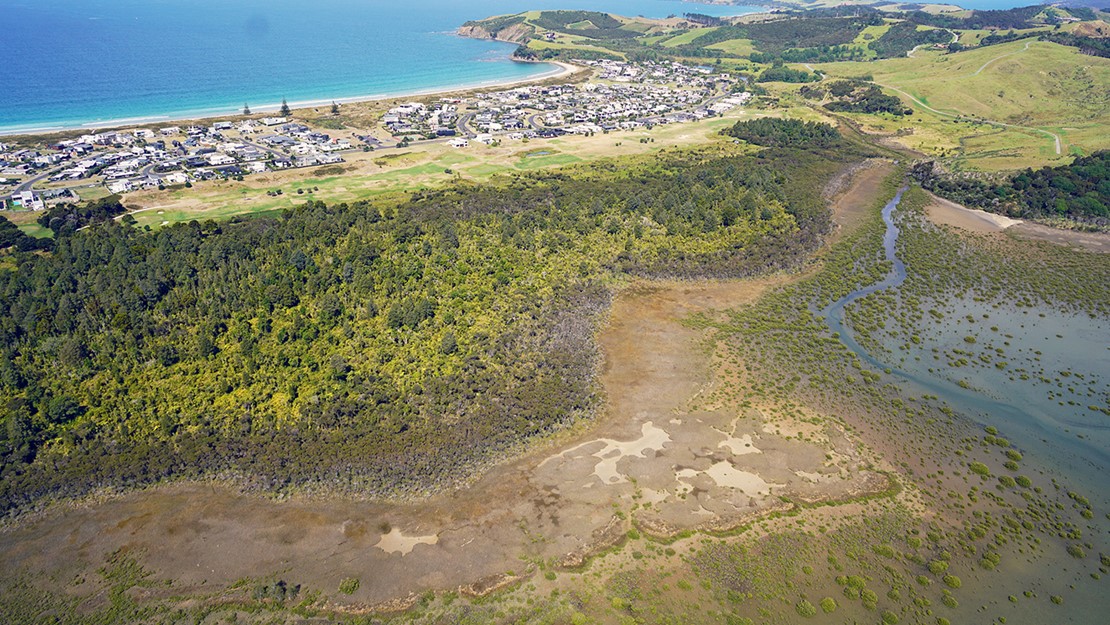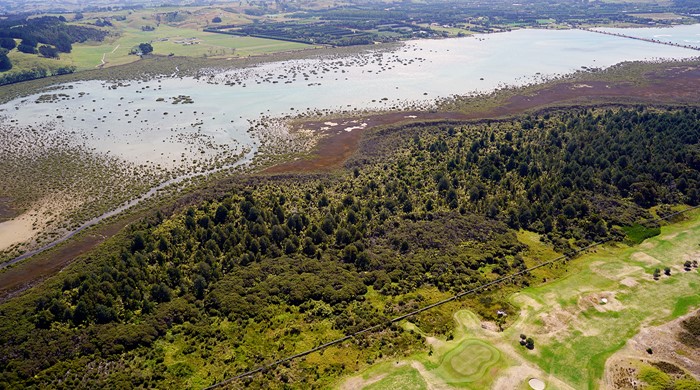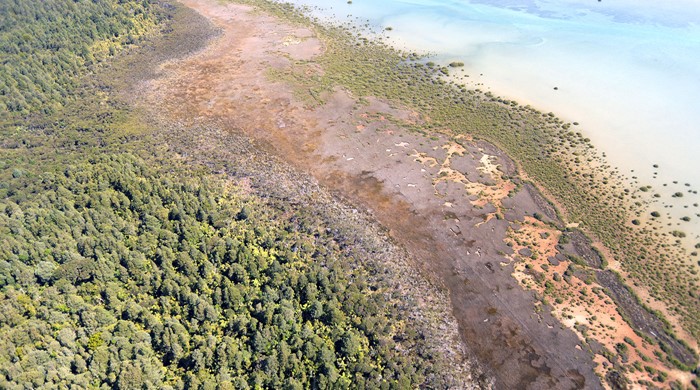Omaha Sequence
Size: 173 hectares
Site description
The Omaha Sequence biodiversity focus area is located at Omaha and includes:
- Omaha Taniko Wetlands Scientific Reserve (administered by the Department of Conservation)
- a reserve at the northern end of the Omaha Spit (administered by Auckland Council).

Key ecosystems
The Omaha Sequence biodiversity focus area includes:
- one of the largest and most important swamp forest remnants in Tāmaki Makaurau / Auckland
- an extensive saltmarsh area in the Whangateau Harbour south of the Omaha causeway which grades into freshwater wetland and stormwater ponds
- sand dunes at the northern end of Omaha Spit including important shorebird and wading bird habitat
- pōhutukawa treeland on the cliffs at the southern end of Omaha Beach.
The intact vegetation sequence from mangrove to saltmarsh (SA1) to mānuka-dominated freshwater wetland (WL12) to swamp forest (WF8) is now rare in Tāmaki Makaurau.
The swamp forest is densely covered in native vegetation and includes a diverse range of native plant species. Mature kahikatea are the dominant tree species. Pukatea, cabbage tree, lancewood and nikau are common along with occasional rimu, taraire and pūriri. Mapere, swamp coprosma and kiekie are common beneath the canopy, along with hangehange growing in drier areas.
There is a fringe of mānuka fen (WL12) along the estuarine edge of the swamp forest.

Native fauna
The swamp forest, mānuka fen and saltmarsh support populations of:
- several threatened plants
- mioweka (banded rail)
- mātātā (fernbird).
The intertidal sand flats and sand dunes at the northern end of the spit provide rich feeding grounds and roosting and nesting habitat for a large number of resident and migratory shorebird species. Species found here include:
- tūturiwhatu (New Zealand dotterel)
- tōrea (South Island pied oystercatcher)
- tōrea pango (variable oystercatcher)
- kuaka (bar-tailed godwit)
- ngutuparore (wrybill)
- pohowera (banded dotterel)
- taranui (Caspian tern)
- tara iti (fairy tern).
At the southern end of Omaha, pāteke (brown teal) and other native waterfowl utilise the stormwater ponds and freshwater wetlands.

Community conservation
The Omaha Shorebird Protection Trust work to protect the shorebirds and their habitat at Omaha Spit. A growing proportion of the local community are involved in animal pest management for the benefit of native species throughout Omaha.



